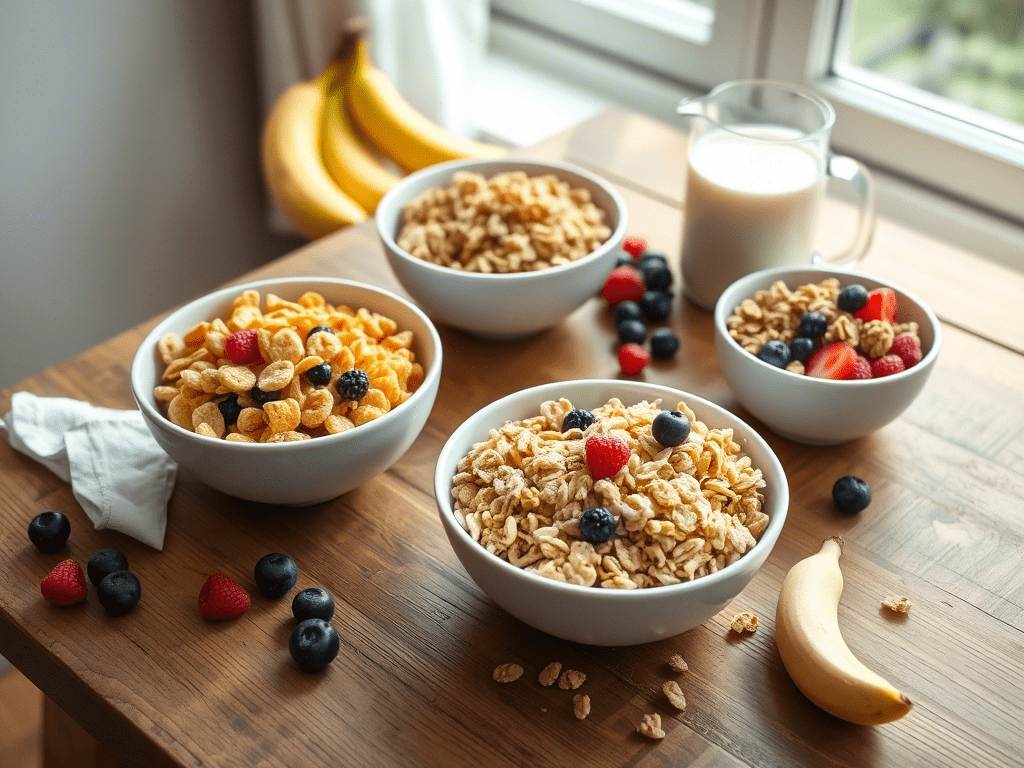9 Best Gluten Free Cereals That Taste Amazing and Keep You Energized
Choosing the right gluten free cereals means finding breakfast options that are safe, healthy, and enjoyable. Whether you’re managing celiac disease, gluten intolerance, or just aiming for a cleaner diet, your cereal should support your goals without sacrificing taste.
This guide will walk you through what cereals are gluten free, how to spot certified options, and which trusted brands offer both flavor and quality. We’ll also talk about corn flakes, kid-friendly choices, and creative ways to use gluten free cereal in your daily routine.
Let’s help you upgrade your mornings with better cereal choices.
Table of Contents
What Are Gluten Free Cereals?
Gluten free cereals are breakfast cereals made without any ingredients that contain gluten—most commonly wheat, barley, and rye. While many cereals look safe at first glance, hidden additives or cross-contamination can make them risky for people with gluten sensitivity or celiac disease.
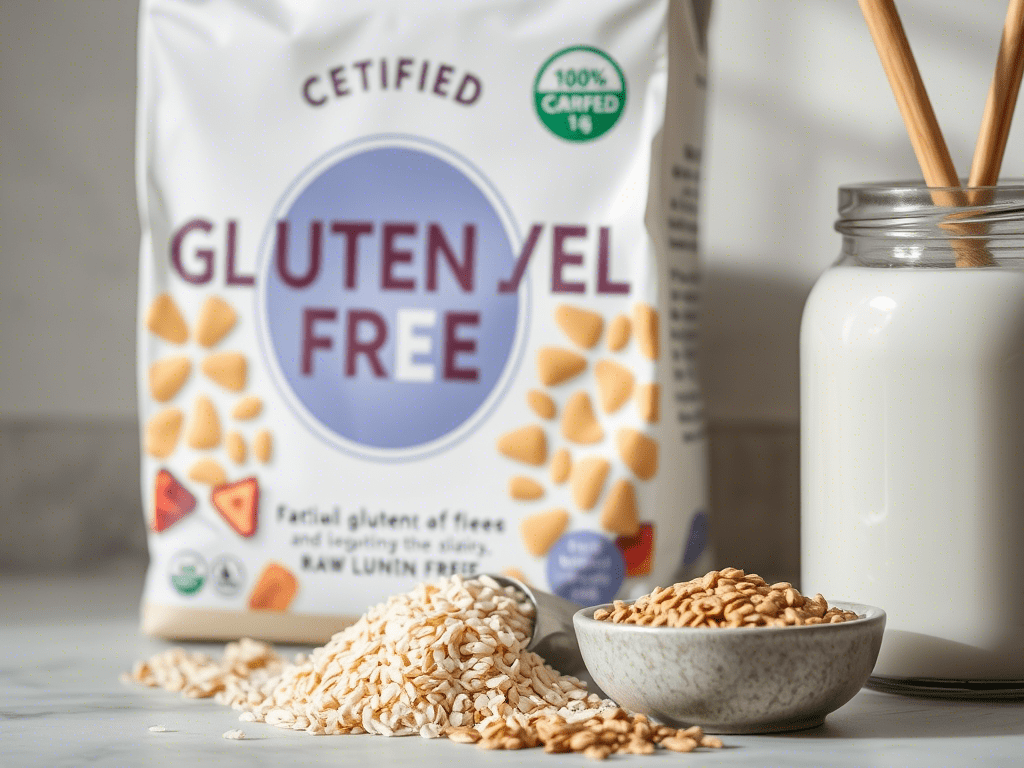
There are two main types of gluten free cereal options:
- Naturally gluten-free grains: These include oats (certified), rice, corn, quinoa, buckwheat, and sorghum.
- Certified gluten-free packaged cereals: These are products that have been tested and verified to contain less than 20 ppm (parts per million) of gluten, which is considered safe for most people avoiding it.
It’s important to look for labels that specifically state “Certified Gluten Free” to avoid guessing. Some cereals may be made from corn or rice but still contain barley malt or be processed in shared facilities, which can lead to cross-contamination.
Choosing the right gluten free cereal isn’t just about the main grain—it’s also about trusting the entire production process.
What Are Gluten Free Cereals?
Gluten free cereals are breakfast cereals that do not contain gluten. This protein is found in grains like wheat, barley, and rye, and must be avoided by people with gluten sensitivity or celiac disease.
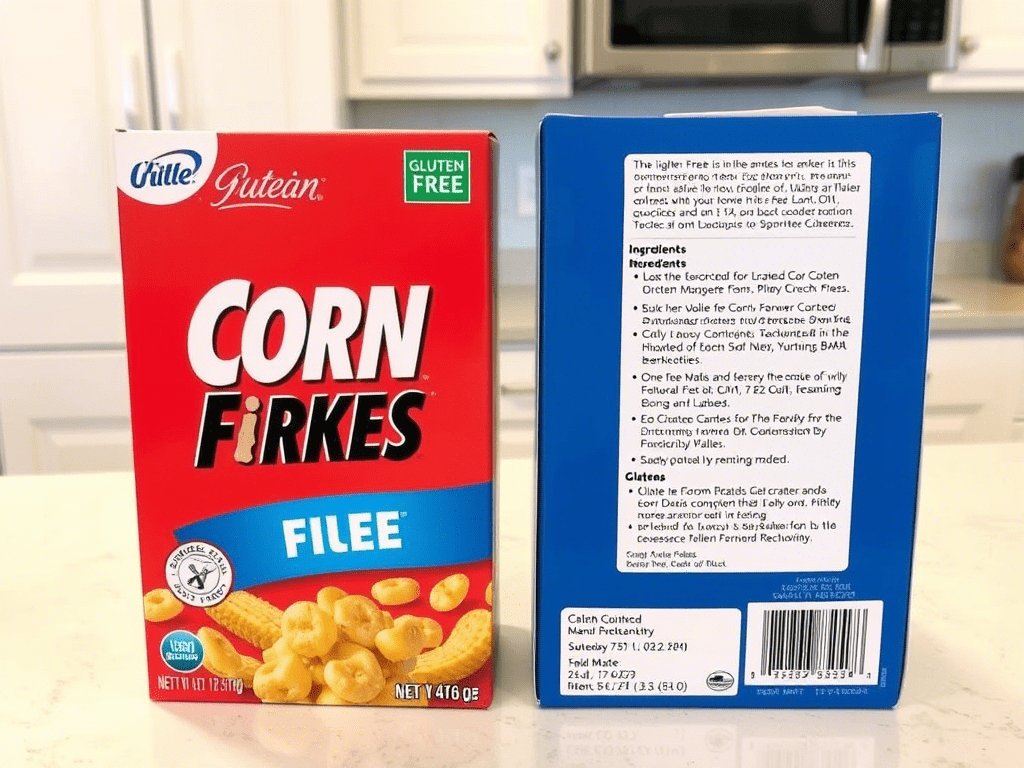
There are two general types of gluten free cereal products:
- Naturally gluten free grains such as oats (certified), rice, corn, quinoa, and buckwheat.
- Certified gluten free cereals made in dedicated facilities, tested to ensure they meet safety standards.
Reading the ingredient list is not always enough. Some cereals contain barley malt or are made in factories where cross-contamination can occur. That’s why labels like “Certified Gluten Free” are important for safety and peace of mind.
To stay safe, always double-check the label and choose trusted brands that are open about their production process.
Are Corn Flakes Gluten Free?
At first glance, corn flakes might seem like a safe choice. After all, corn is naturally gluten free. But the truth is, not all corn flakes are gluten free—and some can be risky if you have celiac disease or gluten sensitivity.
Many popular corn flake brands use barley malt extract, which contains gluten. This ingredient is added for flavor but makes the cereal unsafe for anyone following a strict gluten free diet.
If you’re wondering are corn flakes gluten free, the answer depends on the brand. Some brands clearly label their cereal as “gluten free” and use safe ingredients with no cross-contamination risk. Others might use corn but still process the cereal in facilities that handle wheat.
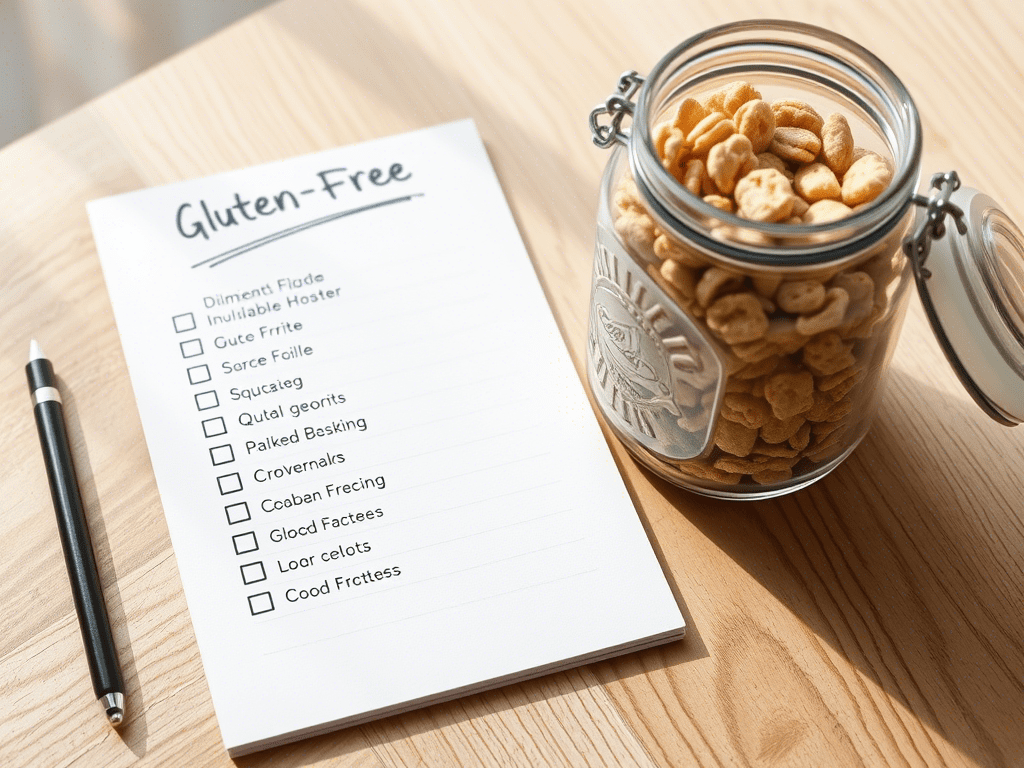
Here’s what to look for:
- Check the ingredient list for barley malt or malt flavoring.
- Look for a “Certified Gluten Free” label on the box.
- Research brands online if labeling is unclear.
So while corn flakes can be gluten free, it’s not guaranteed unless the packaging says so.
What Cereals Are Gluten Free?
When you’re walking through the cereal aisle, it’s not always clear what cereals are gluten free. Some brands use naturally gluten free grains like corn, rice, or quinoa—but that doesn’t always mean the final product is safe.
To be considered truly gluten free, a cereal must:
- Contain no wheat, barley, rye, or malt ingredients
- Be processed in a facility free from cross-contamination
- Be certified by a recognized gluten free organization
Here’s a quick ingredient checklist to help:
- Brown rice, corn, quinoa, amaranth, certified oats
- Barley malt, wheat starch, modified wheat flour
- “Made with gluten free grains” is not the same as certified
You may wonder: which cereals are gluten free and safe to trust? The answer often lies in the label. Look for brands that clearly state “Certified Gluten Free” and list minimal, whole-food ingredients.
Remember: not all cereals are gluten free, even if they sound like it. Reading carefully is part of eating safely.
Top 9 Gluten Free Cereals You Can Buy Today
Looking for reliable, tasty, and safe gluten free cereals? Here’s a curated list of nine trusted options you can find in most stores—or online. These brands offer great flavor, solid nutrition, and peace of mind.
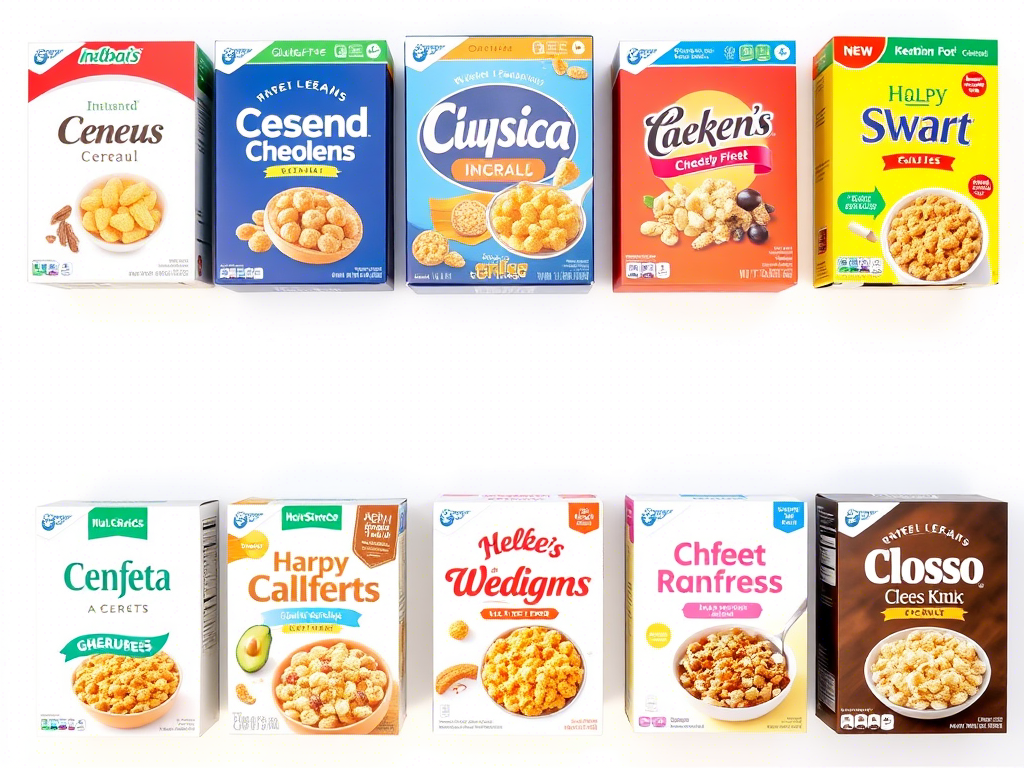
1. Nature’s Path Organic Honey Almond Granola
Crunchy and sweet, made with certified gluten free oats and no artificial ingredients.
2. Barbara’s Puffins Original
Made from corn and oat flour, this gluten free cereal is light, crispy, and perfect with plant-based milk.
3. Chex Cereal (Corn, Rice, and Chocolate flavors)
A grocery store staple that’s certified gluten free and super versatile.
4. Thrive Market Coconut Flakes
A low-carb option made with just coconut, coconut sugar, and coconut oil.
5. MadeGood Crispy Squares (Cereal Bar Format)
Technically not a traditional cereal, but it works for quick breakfasts and lunchboxes.
6. Purely Elizabeth Ancient Grain Granola
Gluten free and packed with quinoa, amaranth, and chia for added nutrition.
7. One Degree Sprouted Brown Rice Cacao Crisps
Think of these as a healthier gluten free twist on chocolate cereal.
8. KIND Healthy Grains Clusters
Slightly chewy, lightly sweet clusters that work well as cereal or topping.
9. 365 by Whole Foods Organic Morning O’s
Budget-friendly, gluten free cereal made from oat flour. Mild in flavor, perfect for sensitive stomachs.
Every option here is certified and safe, so you don’t have to second-guess every spoonful.
Best Gluten Free Cereal for Kids
Finding the right gluten free cereal for kids can feel like a challenge—especially when you’re trying to balance fun shapes, good taste, and clean ingredients. Luckily, there are a few brands that deliver all three.
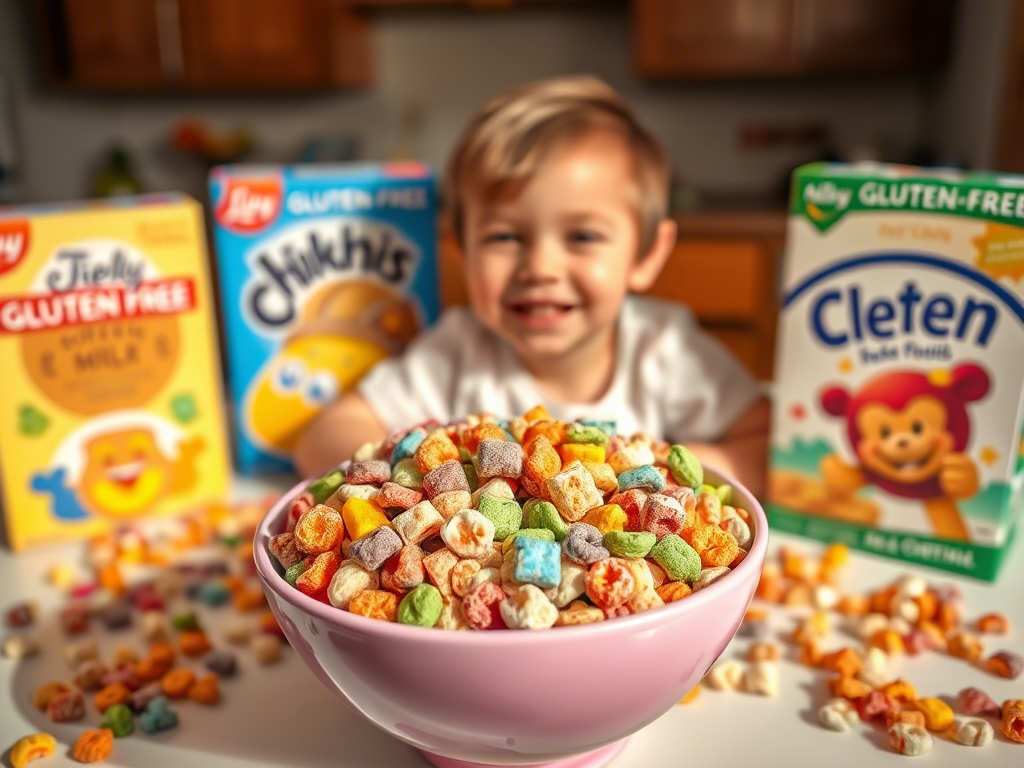
Here are some great options that kids love (and parents trust):
1. EnviroKidz Panda Puffs
Peanut butter–flavored, slightly sweet, and made with organic cornmeal. No artificial additives.
2. Annie’s Organic Cocoa Bunnies
A gluten free cereal that’s crunchy, chocolaty, and made with organic ingredients.
3. Three Wishes Cereal – Fruity Flavor
Naturally flavored, grain-free, and low in sugar. Great for gluten free and grain-free diets.
4. Barbara’s Puffins – Cinnamon or Honey Rice
Crunchy squares kids love, and they stay crispy in milk.
5. Love Grown Lion Loops
Colorful and fun, made from beans instead of traditional grains—high in protein and naturally gluten free.
These cereals are not only safe but also made to appeal to younger taste buds. Just double-check the labels, as not every variety in a brand’s lineup is gluten free.
Low-Sugar & High-Fiber Options
Not all gluten free cereals are created equal—some are packed with sugar and offer little nutritional value. If you’re looking for options that support sustained energy and digestive health, focus on cereals that are low in sugar and high in fiber.
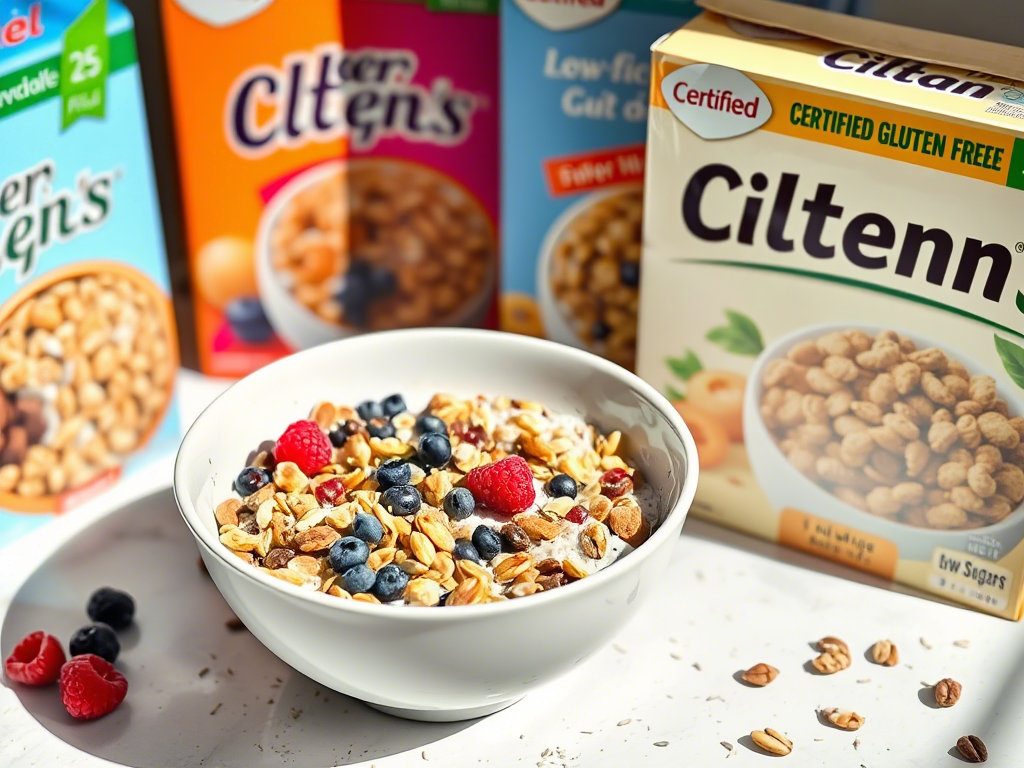
Here are a few standout picks:
1. Three Wishes Unsweetened Cereal
Made from chickpeas and pea protein, this grain-free option has zero grams of sugar per serving.
2. Purely Elizabeth Grain-Free Granola
Low in added sugar, high in fiber and protein from seeds and ancient grains.
3. One Degree Sprouted Brown Rice Cereal
Offers a crunchy texture and sprouted grain benefits with minimal sugar.
4. Bob’s Red Mill Gluten Free Muesli
A hearty mix of whole grains, seeds, and dried fruit. Lightly sweet and very filling.
5. Nature’s Path Qi’a Superfood Cereal
Packed with chia, hemp, and buckwheat for long-lasting energy and fiber.
These gluten free cereal options are ideal for adults who want to avoid sugar crashes or manage blood sugar. They’re also great for anyone transitioning to a cleaner breakfast routine without sacrificing crunch.
How to Store Gluten Free Cereals
To keep your gluten free cereals fresh, crisp, and safe from moisture or contamination, proper storage is key. These cereals often contain fewer preservatives, which means they can go stale faster if not stored correctly.
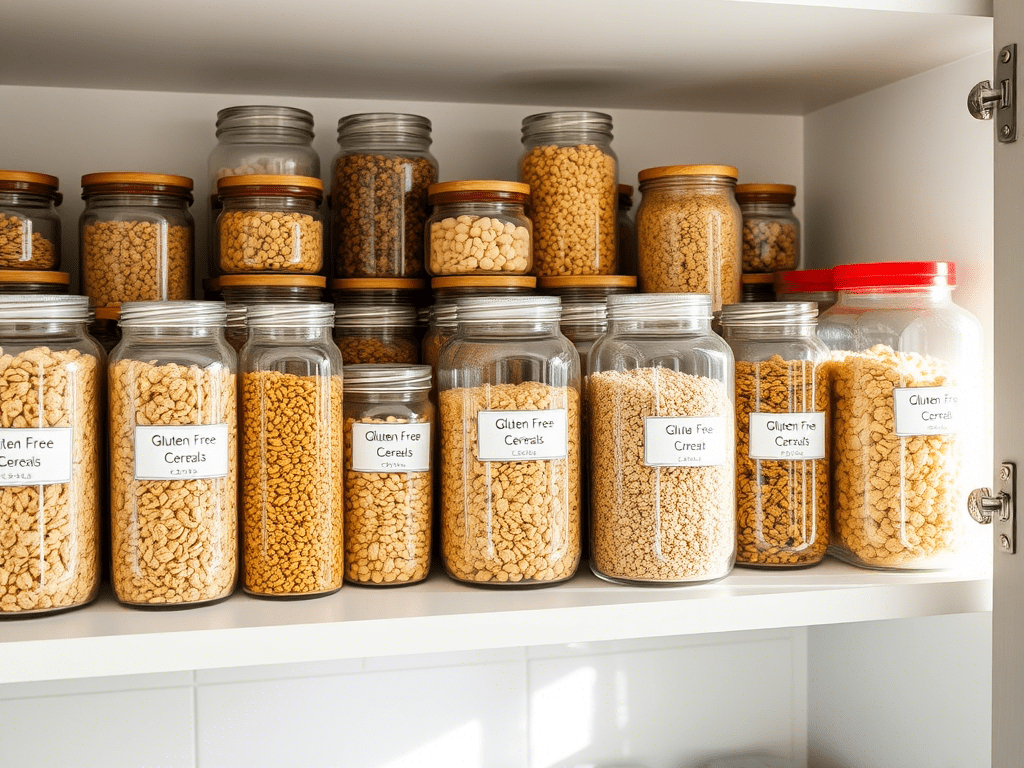
Best Storage Practices:
- Use airtight containers
Transfer your cereal from the original box to a glass or BPA-free plastic container with a tight lid. This keeps air and humidity out and helps maintain that satisfying crunch. - Avoid warm or damp areas
Store cereal in a cool, dry pantry—not above the stove or near the fridge where heat and moisture can creep in. - Label and rotate
If you buy multiple types of gluten free cereal, label each container with the expiration date and use older boxes first. This helps you avoid waste and keeps your cereal lineup fresh. - Freeze for long-term storage
Some cereals (especially granolas or flakes) can be frozen in sealed bags to extend freshness. Just make sure to thaw them at room temperature before using. - Buy in small batches if needed
If you’re not eating cereal daily, buying smaller boxes can reduce the risk of spoilage and give you more variety without clutter. - Avoid using the original bag inside the box
Once opened, the original inner plastic bag isn’t as effective at sealing out air. Pour the cereal into a more secure container to preserve freshness.
Good storage doesn’t just preserve flavor—it protects your cereal from clumping, sogginess, and even pests. A little prep goes a long way in maintaining quality and peace of mind.
Creative Ways to Use Gluten Free Cereal
Gluten free cereals aren’t just for breakfast bowls. With a little creativity, you can turn them into snacks, desserts, and even savory dishes. Here are a few fun and useful ideas to make the most of every box:
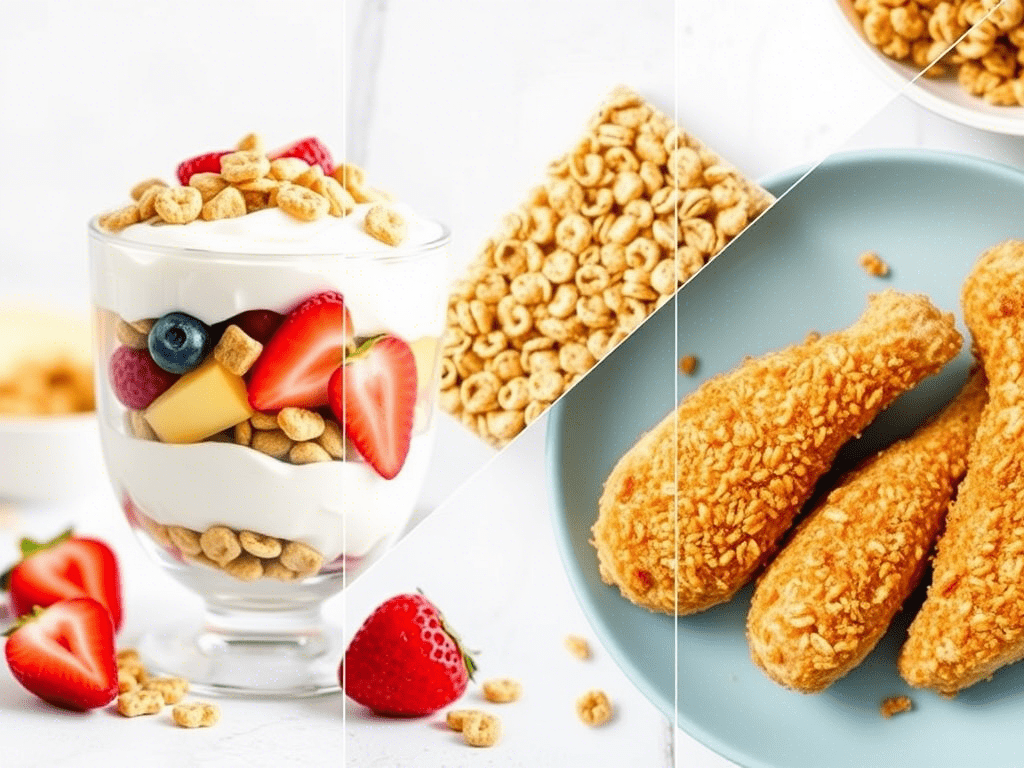
1. Yogurt Parfaits
Layer gluten free cereal with Greek yogurt, berries, and a drizzle of honey for a quick snack or light dessert.
2. No-Bake Cereal Bars
Mix cereal with nut butter and maple syrup, then press into a pan and chill. Cut into squares for an on-the-go snack.
3. Smoothie Toppings
Sprinkle crushed cereal over your smoothie bowl for added crunch and fiber.
4. Crispy Coating for Chicken
Use crushed corn-based gluten free cereal as a coating for baked chicken strips—adds great crunch and keeps it gluten free.
5. Dessert Crunch Layer
Top your ice cream or pudding with lightly toasted cereal for a sweet and salty contrast.
6. Trail Mix
Mix cereal with dried fruit, nuts, and seeds for a portable, high-energy snack.
Cereal doesn’t have to stay in the breakfast lane. These ideas make it easy to repurpose gluten free cereal into fun and useful ways that keep things interesting in your kitchen.
FAQ – Gluten Free Cereals
Are oats gluten free?
Oats are naturally gluten free, but they’re often contaminated during processing. Always look for oats that are labeled “Certified Gluten Free.”
What cereals are gluten free and safe for celiacs?
Look for products labeled “Certified Gluten Free.” Trusted brands include Nature’s Path, Chex (rice and corn), and Purely Elizabeth. These are regularly tested and safe for those with celiac disease.
Are corn flakes gluten free?
Some are, but many contain barley malt, which has gluten. Always check the ingredients or choose a brand that’s certified gluten free.
Can I eat gluten free cereal every day?
Yes—if it’s well-balanced. Go for cereals that are low in sugar and high in fiber. They’re a good way to start your day with energy and digestive support.
Are all cereals labeled “made with corn” safe?
Not always. Corn is naturally gluten free, but that doesn’t mean the entire cereal is safe. Watch out for hidden ingredients like malt flavoring or wheat-based additives.
What’s the difference between gluten free cereal and regular cereal?
The main difference is the grain source and the processing method. Gluten free cereal avoids wheat, barley, and rye, and is processed in a way that avoids contamination.
Final Thoughts + Internal Links + Amazon Picks
Navigating the world of gluten free cereals can be challenging, but with the right information, you can make choices that are both delicious and safe. From understanding which cereals are truly gluten free to discovering brands that prioritize quality and taste, you’re now equipped to make informed decisions.
Internal Links
- Check out our snow cream recipe
- Discover the best baby shower food ideas
- Make your own praline pecans at home
Amazon Picks
Here are some top-rated gluten free cereals available on Amazon:
- Three Wishes Grain-Free Cereal
Made from chickpeas and pea protein, this cereal is both gluten and grain free, providing a high-protein, low-sugar option. - Magic Spoon Fruity Cereal
A modern take on classic cereals, offering a high-protein, low-carb, and gluten free breakfast option. - Cascadian Farm Organic Honey Vanilla Crunch
Combines organic ingredients with a delightful honey vanilla flavor, all while being gluten free.
Remember, always check the product labels and certifications to ensure they meet your dietary needs.

